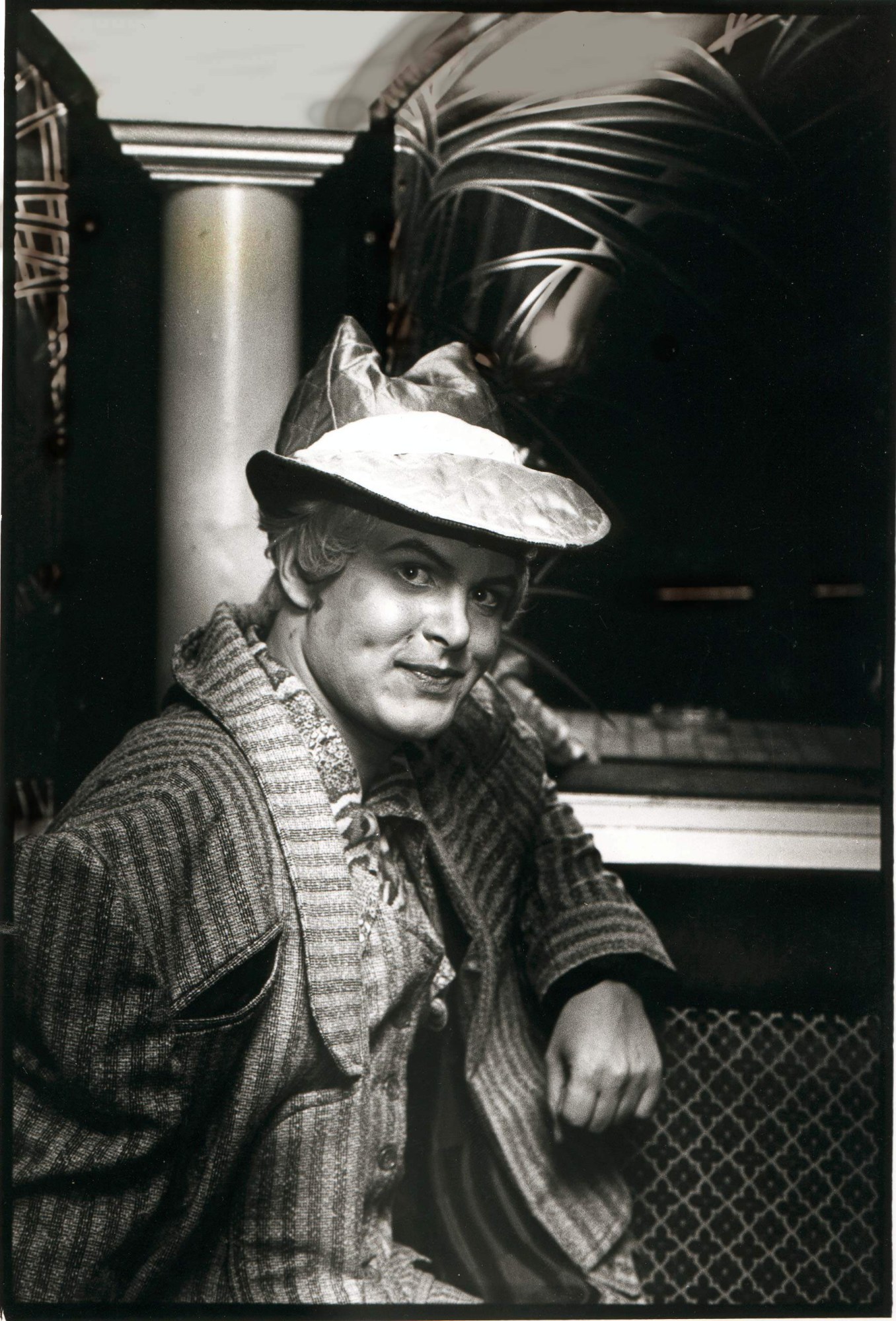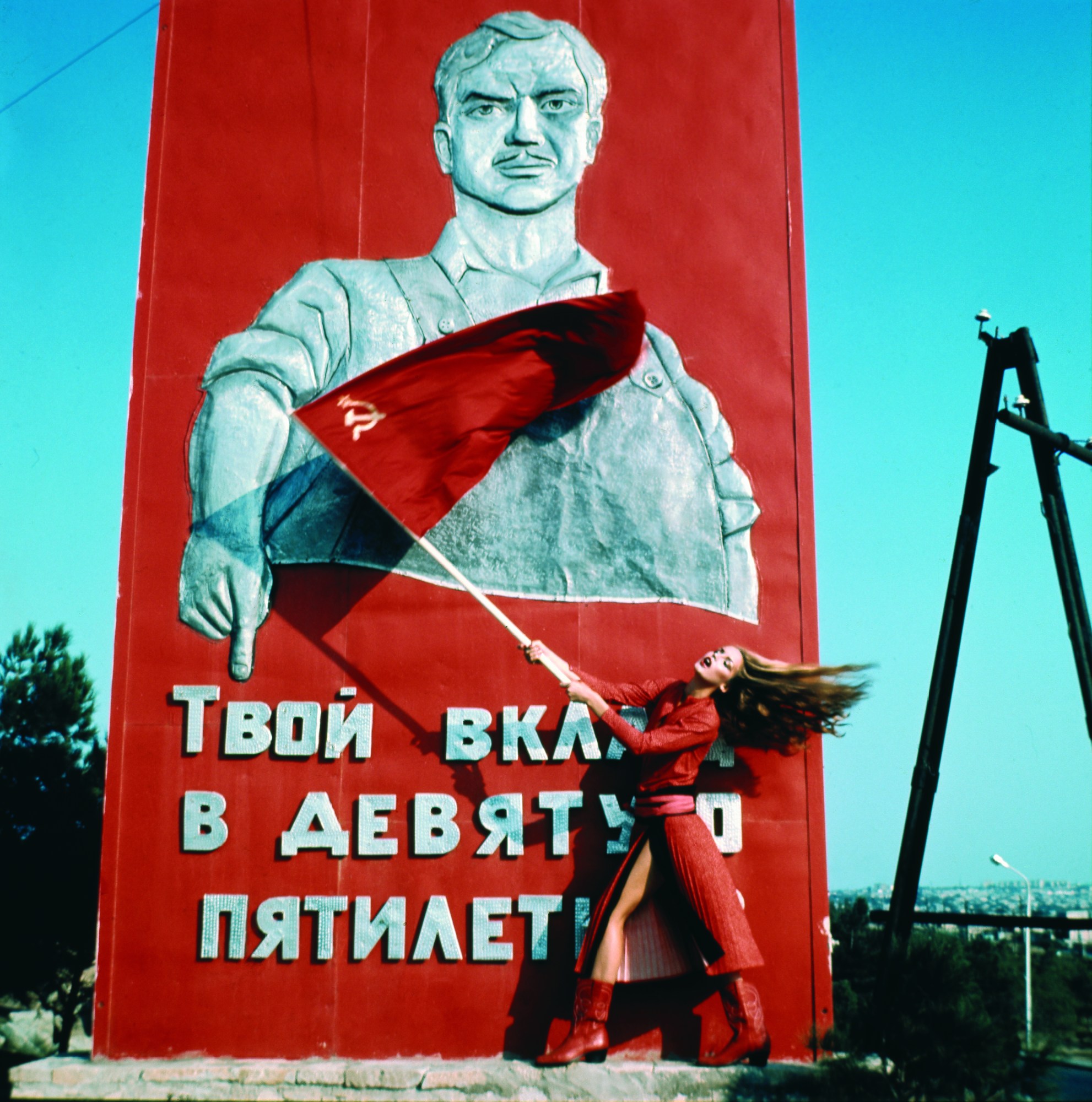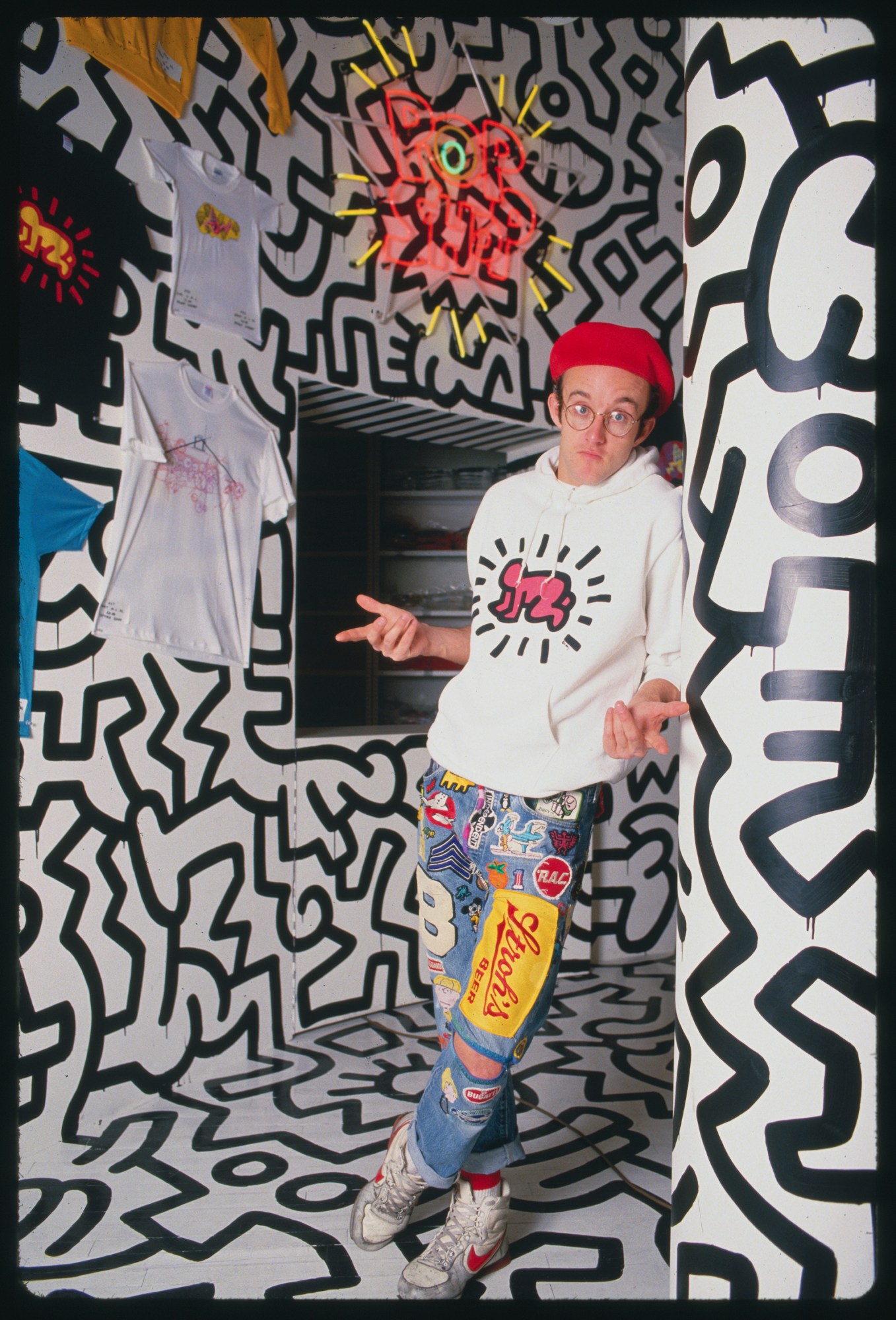Back in the 90s, long before the internet revolutionised magazine publishing, Terry Newman was i-D‘s very own Shopping Editor. Fast-forward to 2019 and she’s also a fashion lecturer and author. Her latest book, Legendary Artists and the Clothes They Wore, is a reflection of this lifelong familiarity with the worlds of art and fashion. Revealing a meticulously researched rummage through the wardrobes of artists from past and present, it explores not only how they dressed, accessorised and styled their hair, but also the ongoing inspiration their looks and their work has provided to fashion designers from today and yesteryear, through specific references or collaborations.
Packed full of fabulous pictures, stories, quotes and anecdotes, the book includes loads of i-D‘s favourite painters, sculptors, photographers, performance and installation artists, as well as a suitably impressive array of fashion stars. These include Keith Haring, Jean-Michel Basquiat, Cindy Sherman, Marina Abramović, Robert Mapplethorpe, Leigh Bowery, Andy Warhol and Frida Kahlo, and on the other side of the equation, Comme des Garçons, Martin Margiela, Marc Jacobs, Raf Simons and Vivienne Westwood, to name just a few.
We spoke to Terry about her continued deep dive into the sartorial history of our most beloved cultural icons.

Some people might assume artists are generally scruffy or paint-splattered, and not necessarily stylish. How wrong are they?
The wardrobes of the artists I’ve looked at reflect their character and work in many ways. Robert Mapplethorpe, for example, was described as “pretty but tough, androgynous and butch”. He wore battered leather jackets and slinky poet shirts and beads; he shot fetish images of naked men and beautiful flowers so there’s a link. With an artist like Yayoi Kusama, she’s a walking canvas with her tomato red bobbed hair and dotty styling, and her look is mirrored in her art and the fashion collaborations she did including bags at Louis Vuitton. I don’t think she’d dream of wearing any old scruffy thing!
Your previous book explored the styles of famous authors. Are artists generally more aware of their own image, or more experimental with it, than writers?
The art world is about self-expression and the power of image, so it makes sense that an artist is more aware of how they come across, even if they pretend not to! Exploring the clothes of both artists and authors for me was about getting insight into what made these creatives tick. I found some artists were very obviously attentive with their wardrobe choices, others more intuitive. Cindy Sherman, it seems, is completely into clothes and a front row queen. She knows what she likes and loves designer labels. Dressing up, for art or a fashion show, appears to come very naturally to her. With authors, it’s slightly different, but still their clothes tell stories about themselves and that’s what I’m interested in.

Which artists did you feel most excited by when you were growing up — and was that as much to do with their work, as it was to do with their image and lifestyle?
I was always in love with Yoko Ono. I thought her conceptual approach was ultra-cool and I loved her hair and sunglasses — both her image and art seemed to be sophisticated and alluring. When I discovered Niki de Saint Phalle I was mesmerised too. She wore jumpsuits and shot things with a rifle and it was art. I would never wear a jumpsuit, but she looked fab and was strongly determined which inspired me. I also adored the pictures of her with Andy Warhol, wearing lamé turbans at Studio 54.
When you were one of the editors at i-D, in the 90s, which artists were impacting fashion at that time and what kind of impression did that leave with you?
The artists that represented underground New York, including Robert Mapplethorpe, Keith Haring, Basquiat and, of course, Warhol were then, and still are, very influential. These artists made art feel relevant and fashionable — they shone a spotlight on the outsider, and that was fresh and in tune with what the ethos was in the 90s at i-D. They also looked cool and that had cache too. Basquiat modelled for Comme des Garçons. Haring wore Nike Air Jordans and Mickey Mouse T-shirts.

There’s an amazing range of artists in the book — if you were to pick out a few personal favourites, whose style is particularly influential, who would you choose?
Louise Bourgeois is incredible. Helmut Lang said he had “a strong unconditional bond” with her and she was photographed by Mapplethorpe for one of his adverts wearing a fur jacket and carrying a penis sculpture covered in latex under her arm. There’s a lot of synchronicity between her and Rei Kawakubo’s work, too, and this was explored in the Met Museum exhibition on Comme in 2017. I am also a huge fan of Leigh Bowery and his outrageous art-meets-fashion wardrobe, as well as his installations that have been extremely influential — from Alexander McQueen, to Rick Owens, to Margiela, they’ve all sampled Leigh in one way or another. His creativity was tenacious and groundbreaking, and he has been recognised and paid homage to by some of the best fashion designers out there.
Which of them do you feel convey a timeless sense of style?
Despite being of their time, the artists I’ve included all seemed to have a style that worked beyond the fashion system. The clothes they wore were extensions of their identities — which is what I think is most fascinating about what people wear. That’s why they have become muses to so many designers. Some of them, like Jackson Pollock, who habitually wore Levi’s, or Lee Jeans and a white T-shirt was the James Dean of the art world… self-destructive and radically intense. His look is very modern and easy to wear now. Equally, Dali and Duchamp wore urbane tailored suiting so if you’re thinking about what might slip obviously into a collection, those wardrobes would. However, the mapping of artistic sartorial choices, however unusual they might seem to be at first, is seen more and more in designer fashion. Lee Miller at Phoebe Philo-era Celine, Niki de Saint Phalle at Dior, and Mapplethorpe and Warhol at Raf Simons are all good examples of this.

Rumour has it, you are the owner of original artworks by Keith Haring and Robert Mapplethorpe…
When I was a student, me and my husband, Andrew, loved the Grace Jones picture where she has been painted by Keith Haring and photographed by Robert Mapplethorpe, and we had a little postcard of it stuck on the wall in our tiny studio flat. We were lucky enough to go and buy the actual picture many years later. When we went to the gallery we also fell in love with one of Mapplethorpe’s self-portraits and got that too.
Over the years we’ve found different Keith Haring pieces, including my favourite — a chalk drawing done on the subway and torn down. We bought it from an auction and the chalk is quite faint, so we wondered whether we should go over it in Tipp-Ex ourselves when we got it home. There are lots of fabulous and unusual Haring pieces out there — he was so kind and generous. He drew on caps for kids and drew sketches for anyone who asked. His mantra was: “Art for all.”

Which fashion collections stand out most to you as a brilliant collaboration between art and fashion?
I’m obsessed by Schiaparelli and what she did with Dali: I love the famous surrealist Lobster dress they created in 1937, as well as its beaded re-imagining by Margiela Couture in 2014. I would like to own the entire Westwood Witches collection from 1983, where they used Haring to decorate clothes with fluorescent graffiti and sorcerous imagery. The Sprouse-Vuitton neon handbags from 2009 are marvellous too. My favourite fashion-art collections, though, are when fashion transcends and becomes conceptual and art itself. So, my more recent favourites are Comme des Garçons’ Lumps and Bumps collection from spring/summer 97, Hussein Chalayan’s table-dress collection from 2000 and McQueen’s 1999 show when Shalom Harlow’s dress is spray-painted by machines in the final as she twirls on a rotating platform.
While researching the book, did you discover any nuggets of info that you hadn’t previously known?
Keith Haring was told off constantly by the Paris Ritz when he stayed there in 1989, for wearing high top sneakers instead of ‘proper shoes’ in the restaurant!
Legendary Artists and the Clothes They Wore is published by Harper Design on June 27th.
